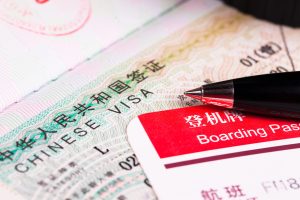In August, Beijing announced it would create a new visa to make it easier for young STEM grads from certain institutions to make short-term trips to China, without needing an invitation from a domestic entity.
At the time, few seemed to notice.
But an online furor erupted last week, a few days before the so-called K visa was set to launch. On popular Twitter-like website Weibo, hashtags on the topic have since racked up tens of millions of views.
The new visa has touched two nerves: xenophobic fears and concerns over domestic unemployment. The fact that the new visa was met with such intense anger despite its limited scope may help explain why China has been reluctant to relax its immigration rules, despite a looming demographic crisis.
The reaction has been shaped by a supposed connection to U.S. President Donald Trump’s recent tightening of the rules around H1-B skilled worker visas. The logic of many posters is that because Indians are the main recipients of the H1-B visas, spurned Indians will use the new K visa to flood into China. Fuel was added to the fire by viral screenshots of an Indian newscaster suggesting China was asking people to “pack their bags” and enjoy “ample opportunities.”
Countless Weibo users repeated a host of negative stereotypes about Indians, depicting them as unhygienic and untrustworthy. One typical Weibo comment, using a racist slur, said “Ah-san is like a cockroach, there’s more and more.”
Other posts focused on the two nations’ rocky relationship in recent years, sharing videos of 2020 clashes between their militaries in the Himalayas, as well as the portraits of the Chinese soldiers who died.
Some worried that the K visa would be an easy way for spies to infiltrate China’s scientific institutions and innovative firms.
Conspiracy theories abounded. Some suggested that the government was intentionally low-key when announcing the K visa to avoid public backlash. A few also leaned into antisemitic tropes, arguing that the influence of “Jewish international capital” lay behind the decision. Ironically, many of the people warning of the danger of mass migration were parroting talking points imported from the Western far-right.
More grounded netizens pointed out China’s high youth unemployment rate, which approached 19 percent in August.
Of course, angry ranting on Weibo can’t be directly conflated with the attitudes of the Chinese public as a whole. However, the state media establishment clearly believed that this outrage wasn’t just a fringe concern. We can see this from the wave of opinion pieces and op-ed that sought to defuse the controversy.
The official People’s Daily ran an article entitled “Misinterpreting the K visa will only mislead the public.” It argued that attracting the best global talent is key to a country’s international competitiveness, and dismissed concerns over unemployment, mass migration, and espionage. It also said that China’s manufacturing industries could be short of 3 million workers this year – though this led to some frenzied speculation that the government plans to bring in that many foreigners to fill this gap.
A commentary by ex-editor of the Global Times tabloid Hu Xijin, one of several on the topic published by nationalist outlet Guancha, attempted to soothe readers by assuring them that the new visa won’t be enough to change China’s racial makeup. A now-deleted commentary shared on WeChat argued that of course Hu doesn’t care about China’s unemployed youth – he’s retired, after all.
This isn’t the first controversy over moves to make it easier to come into China.
A 2020 proposal to expand access to permanent residency for wealthy or highly skilled foreigners was met with netizens saying they’d rather jump off the Great Wall than marry a foreigner. Eventually, the proposal was withdrawn for alterations.
This anti-immigration sentiment is striking when contrasted with the relatively small number of foreigners living in China.
In 2023, just 711,000 residence permits were issued to foreigners living in China — down 15 percent from 2019 and equivalent to 0.05 percent of the country’s population. The new visa, with its limited eligibility criteria, is unlikely to do much to change that. According to state media reporting, from 2004 to 2020 just 20,000 foreigners were given permanent residency status. There’s essentially no path to citizenship.
However, this state of affairs may come under growing pressure in the coming decades as China faces a demographic crisis. Its population began to shrink in 2022 due to low fertility rates. The United Nations estimates that China’s population could decline by 100 million by mid-century. Meanwhile, about 300 million Chinese aged between 50 and 60 are set to leave the workforce in the coming decade. A similar crisis in Japan has prompted it to loosen its migration rules to plug labor shortages, including in “building cleaning management” and the food service industry.
But Beijing, ever cautious when it comes to social stability, has shown little sign of doing the same. Indeed, a 2023 document from the industrial ministry proposed another solution to labor shortages in key industries – developing humanoid robots.





























